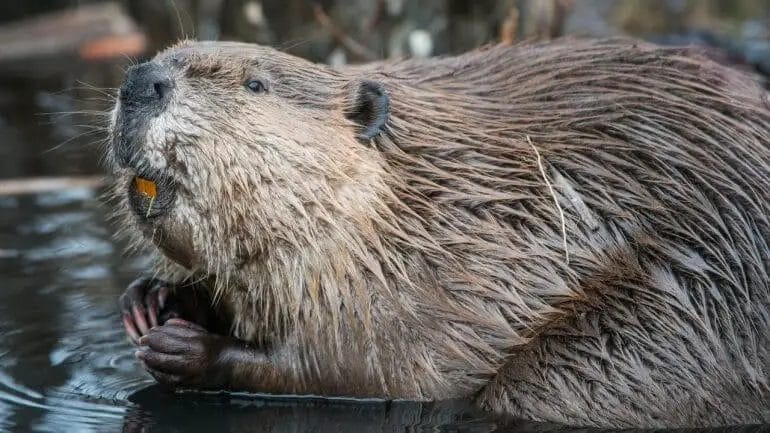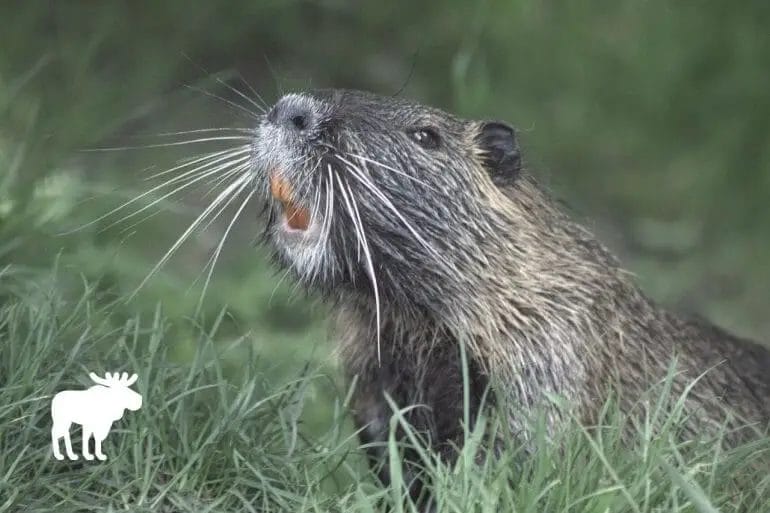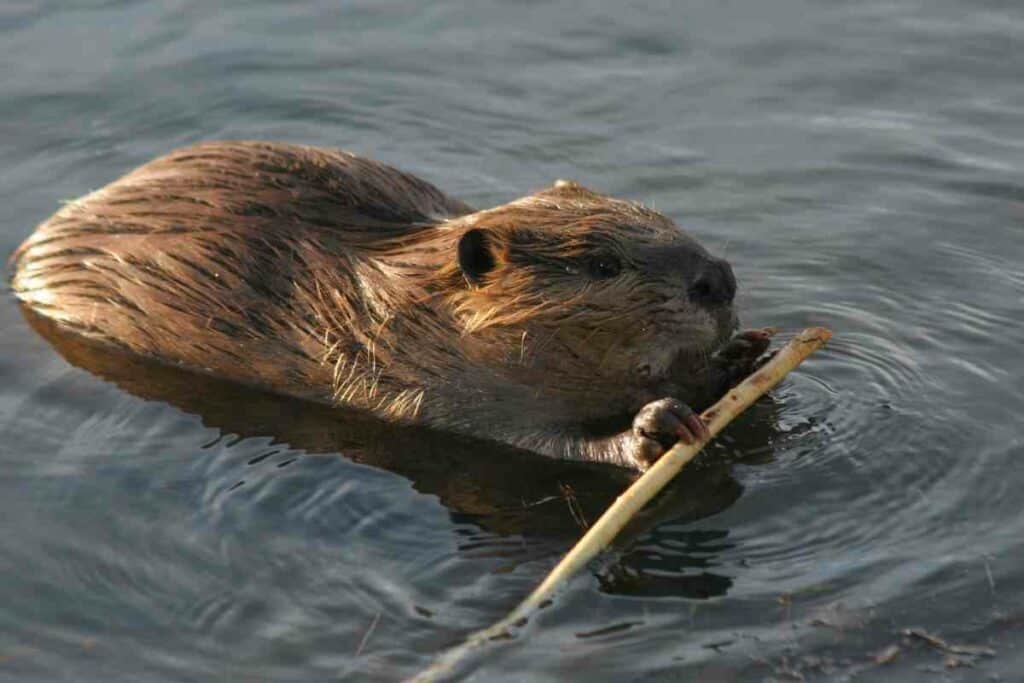Beavers, the industrious creatures of the animal kingdom, have a unique dietary preference for wood. This behavior is driven by their biological need to survive and thrive in their habitats. With their strong jaws and sharp incisors, beavers consume wood as a crucial source of nutrients, primarily the inner bark. By gnawing on trees and constructing elaborate dams and lodges, beavers create an environment that supports their ecosystem and provides protection from predators. Their ability to eat wood is an integral part of their adaptive strategy for survival.

Adaptations that enable beavers to eat wood
Beavers are well-known for their ability to eat wood, which is a unique adaptation that sets them apart from many other animals. This ability is made possible by a combination of physical and physiological adaptations that allow beavers to process and digest wood effectively.

1. Specialized teeth
One of the key adaptations that enable beavers to eat wood is their specialized teeth. Beavers have large and powerful incisors that continue to grow throughout their lives. These incisors are self-sharpening and have a strong enamel coating, which allows beavers to gnaw through tough wood with ease. The front surface of their incisors is orange due to the presence of iron, which provides additional strength and protection against wear and tear.
2. Strong jaw muscles
In addition to their specialized teeth, beavers have strong jaw muscles that enable them to exert significant pressure while chewing. These powerful muscles allow beavers to break down wood into smaller, more manageable pieces, making it easier to swallow and digest. The combination of their sharp teeth and strong jaw muscles allows beavers to efficiently extract nutrients from wood.
3. Unique digestive system
Beavers possess a unique digestive system that is specially adapted to extract nutrients from wood. They have a large cecum, which is a pouch located at the beginning of their large intestine. The cecum houses beneficial bacteria and microorganisms that aid in the breakdown of cellulose, a complex carbohydrate found in wood. These microorganisms ferment the cellulose, breaking it down into simpler compounds that can be absorbed and digested by the beaver.
Furthermore, beavers have a long and efficient digestive tract, which allows for extended fermentation and absorption of nutrients from wood. The slow and thorough digestion process ensures that beavers can extract as many nutrients as possible from their woody diet.
4. Ability to regrow teeth
Another remarkable adaptation of beavers is their ability to regrow their worn-down teeth. As beavers use their teeth extensively for gnawing through wood, their incisors can wear down over time. However, beavers have continuously growing teeth, and as the front surface wears away, the backside continues to grow. This constant growth ensures that beavers always have sharp and functional teeth for their wood-eating activities.
In summary, beavers have developed a range of adaptations that enable them to eat wood effectively. Their specialized teeth and strong jaw muscles allow them to gnaw through tough wood, while their unique digestive system and ability to regrow teeth enable them to extract nutrients from the cellulose-rich material. These remarkable adaptations have allowed beavers to thrive in environments where wood is their primary food source.

Nutritional Benefits of Wood for Beavers
Wood is a vital component of a beaver’s diet and provides numerous nutritional benefits for these industrious creatures. As herbivorous mammals, beavers rely on a diet primarily consisting of plant matter, with wood being a crucial source of nutrition. Let’s delve into the nutritional benefits that wood offers to beavers.
1. High Fiber Content
Wood is rich in fiber, making it an essential dietary component for beavers. The high fiber content aids in digestion and helps maintain a healthy digestive system. Beavers have specialized teeth and digestive systems that enable them to break down the tough cellulose found in wood and extract nutrients from it. Fiber also promotes a feeling of fullness, helping beavers meet their energy requirements.
2. Nutrient-Dense Bark
Beavers primarily consume the bark of trees, which is packed with essential nutrients. Bark contains vitamins, minerals, and trace elements that are beneficial for a beaver’s overall health and well-being. It serves as a concentrated source of nutrients, providing beavers with the necessary elements to support their physiological functions.
3. Energy Source
Wood serves as a valuable energy source for beavers. As they gnaw through trees and consume the inner bark, they obtain carbohydrates, which are converted into energy by their bodies. This energy is crucial for their daily activities, including building dams and lodges, foraging for food, and raising their young.
4. Dental Health
The gnawing behavior of beavers is not only necessary for consuming wood but also plays a vital role in their dental health. Their continuously growing incisors are kept in check by the abrasive texture of wood. Gnawing also helps maintain proper teeth alignment, preventing dental issues and ensuring efficient wood consumption.
5. Water Content
Although wood is not a direct source of hydration, it does contribute to a beaver’s water intake. Trees and branches have a certain amount of moisture content that beavers can extract during consumption. This additional hydration can be beneficial, especially in drier periods or when other water sources are limited.
6. Micronutrient Source
Wood contains essential micronutrients that are vital for a beaver’s health. These micronutrients include calcium, iron, magnesium, and potassium, among others. By consuming wood, beavers ensure they obtain these micronutrients, which contribute to their growth, bone development, and overall physiological functions.
Summary
Wood provides beavers with numerous nutritional benefits. The high fiber content aids digestion and promotes a feeling of fullness, while the bark serves as a nutrient-dense component of their diet. Wood is a valuable energy source and contributes to dental health. Additionally, it contains important micronutrients and contributes to a beaver’s water intake. Overall, wood plays a crucial role in supporting the nutritional needs of these fascinating creatures.

Impact of Wood Consumption on Beaver Habitats
Beavers, known for their impressive engineering skills, play a vital role in shaping ecosystems through their wood consumption habits. These industrious creatures have adapted to a life that revolves around wood, using it to build their dams and lodges. While their consumption of wood is essential for their survival, it also has a significant impact on beaver habitats and the surrounding environment.
Wood consumption serves as the foundation of a beaver’s habitat. By felling trees and using them to construct dams across rivers and streams, beavers create impoundments that serve as their homes. These dams also provide a myriad of benefits, including flood control, water storage, and improved water quality. However, the process of wood consumption can have both positive and negative effects on beaver habitats.
Positive Impacts
The consumption of wood by beavers has several positive impacts on their habitats:
- Dam Construction: Beavers use wood to build their dams, creating impoundments that create wetland habitats. These wetlands foster biodiversity and provide habitats for a wide range of species.
- Water Regulation: Beavers’ dams help regulate water flow, especially during periods of heavy rainfall. They can alleviate flooding downstream and maintain water levels during dry seasons, benefitting both aquatic and terrestrial species.
- Water Filtration: The construction of beaver dams aids in water filtration by trapping sediment and pollutants. This results in cleaner water downstream and supports the health of aquatic ecosystems.
- Enhanced Biodiversity: Beaver dams create a mosaic of habitats, including ponds and wetland areas, which support a diverse array of plants, invertebrates, birds, and mammals. The increased biodiversity within these habitats contributes to overall ecosystem health.
Negative Impacts
Although wood consumption by beavers has numerous positive effects, it also has some negative impacts on their habitats:
- Deforestation: Beavers selectively cut down certain tree species, which can lead to localized deforestation. This can change the composition of forests and impact the availability of food and shelter for other species.
- Altered Water Flow: While beaver dams regulate water flow, they can also alter the natural hydrology of a landscape. This may result in changes to the flow of water downstream, potentially affecting other plants and animals that rely on specific water conditions.
- Loss of Riparian Vegetation: Beavers consume large amounts of wood, including the bark of trees. This can result in the loss of riparian vegetation, which plays a crucial role in stabilizing stream banks and providing shade and nutrients to the ecosystem.
- Conflicts with Human Activities: In some cases, beavers’ wood consumption habits can come into conflict with human activities, such as agriculture, forestry, or infrastructure. Damage to crops, timber resources, or flooding of roads and properties can occur in these situations.
It is essential to strike a balance between the positive and negative impacts of wood consumption by beavers. Understanding and managing beaver habitats can help mitigate potential conflicts and promote coexistence between humans and these remarkable ecosystem engineers.
How Beavers Select and Process Their Wood Diet
Beavers are known for their exceptional ability to manipulate their environment by constructing dams and lodges. One of the most fascinating aspects of their behavior is their diet, which primarily consists of wood. In this section, we will explore how beavers select and process their wood diet.
1. Wood Selection
Beavers are selective when it comes to choosing the wood they consume. They prefer hardwood trees such as aspen, willow, and birch. These trees are not only abundant in their natural habitat but also have a softer wood texture, making them easier for beavers to gnaw through.
When selecting wood, beavers often target younger trees with a diameter of around 6-8 inches. This size is ideal for their feeding habits and allows them to quickly fell the tree and transport it to their dam or lodge.
2. Wood Processing
Once a beaver has selected a suitable tree, it begins the process of wood processing. This involves chewing through the tree trunk using their strong incisor teeth. Beavers have specialized dental adaptations that enable them to gnaw through the tough outer bark and wood.
As they chew through the tree, beavers create a distinctive pattern of grooves known as “girdling.” This girdling weakens the tree and eventually causes it to fall. Beavers are capable of felling trees much larger than themselves, thanks to their immense chewing power and teamwork.
3. Wood Transportation
After felling a tree, beavers need to transport the wood to their desired location, typically their dam or lodge. They have a remarkable ability to maneuver and carry logs in water, making use of their powerful paddle-like tails and webbed hind feet.
Beavers often create canals or channels in the water, which serves as a pathway for transporting the wood. They push or pull the logs along these channels, effectively transporting large amounts of wood to their construction sites.
4. Wood Storage
Beavers not only consume wood for sustenance but also store it for future use. They create underwater food caches by anchoring logs to the bottom of ponds or streams. These stored logs act as a reliable food supply during the winter when fresh vegetation is scarce.
Beavers have an intricate system of tunnels and chambers within their lodges, where they store the processed wood. The stored wood remains submerged in water, preventing it from drying out and facilitating easy access for the beavers when needed.
5. Wood Digestion
Unlike humans and many other animals, beavers have the unique ability to digest cellulose, the main component of wood. They have a specialized digestive system that allows them to break down the complex fibers present in wood.
Beavers have a large cecum, which is a saclike structure located where the small and large intestines meet. The cecum contains bacteria and other microorganisms that aid in the fermentation and digestion of cellulose, extracting nutrients from the wood.
Summary
Beavers have evolved intricate behaviors and adaptations to effectively select and process their wood diet. From carefully choosing the type and size of trees to gnawing through the tough wood, these industrious creatures demonstrate remarkable skills and teamwork. The ability to digest cellulose and store wood for future use further enhances their survival in their aquatic habitats. Understanding how beavers interact with their wood diet provides valuable insights into the ecological role they play and the unique adaptations they possess.
FAQs
Why do beavers eat wood?
Beavers eat wood because it serves as their primary source of food and is rich in nutrients. Their digestive system is adapted to break down and extract nutrients from the cellulose in wood. Additionally, chewing on wood helps to maintain their teeth, which continuously grow throughout their lives.
Conclusion:
In conclusion, the behavior of beavers consuming wood serves multiple purposes in their survival and habitat management. Beavers rely on wood consumption for energy and as a source of essential nutrients. Their powerful incisors are perfectly suited for gnawing through tough tree bark and creating dams and lodges. By building dams, beavers create new habitats and help regulate water flow, benefiting other species in their ecosystem. While wood-eating behavior may seem peculiar, it is a vital adaptation that allows beavers to thrive in their environment.
The ability of beavers to shape their surroundings through wood consumption demonstrates their ecological importance. Their actions contribute to the creation of wetlands and can improve water quality by filtering sediments. Furthermore, the felled trees provide food and shelter for various organisms. However, it’s important to note that beavers select their wood sources strategically, favoring certain tree species over others.